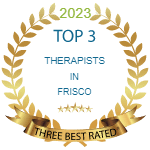Schizophrenia and dissociative disorders are both serious mental health disorders that involve different symptoms and different treatments.
There’s a popular misconception that people with schizophrenia switch from personality to personality—each with its name, thoughts, and voice. That’s not the case, however.
People who believe that are confusing schizophrenia with a dissociative disorder known as dissociative identity disorder (formerly called multiple personality disorder).
Schizophrenia Characteristics
Schizophrenia is likely the more well-known of the two mental illnesses. However, it’s widely misunderstood.
To meet the criteria for schizophrenia, an individual must experience two or more of the following symptoms (and at least one of the symptoms must be one of the first three items on the list):
- Delusions: Delusions include fixed false beliefs. For example, someone may believe aliens are talking to him through a certain radio program or that someone is spying on him even though there is no such evidence.
- Hallucinations: Someone may see things that others don’t see, hear things that no one else hears, or smell things that no one else smells.
- Disorganized speech: This may include things such as using made-up words or phrases that only have meaning to the individual, repeating the same words or statements, using meaningless rhyming words together, or jumping from topic to topic without being able to hold a conversation.
- Grossly disorganized or catatonic behavior: Individuals may exhibit bizarre behavior that interferes with their ability to function. Individuals with catatonic behavior may appear unresponsive even though they are awake.
- Negative symptoms: Individuals with schizophrenia may not exhibit certain types of emotional reactions that healthy people do. For example, an individual with schizophrenia might not interact socially or the individual might not show an emotional reaction to either good news or bad news.
Some individuals with schizophrenia exhibit inappropriate affect. This includes behaviors such as laughing in the absence of anything funny.
Signs and Symptoms of Schizophrenia
Dissociative Disorder Characteristics
There are three main types of dissociative disorders in the DSM-5, the manual that is used to diagnose the entire range of mental conditions. These are depersonalization/derealization disorder, dissociative amnesia, and dissociative identity disorder.
All three are characterized by a disruption in:
- Behavior
- Body representation
- Consciousness
- Emotion
- Identity
- Memory
- Motor control
- Perception
Depersonalization/Derealization Disorder
People with depersonalization disorder feel detached from their actions or feelings like they’re watching a movie. They might also experience derealization, which is feeling like other people and things aren’t real. A person might only experience depersonalization, only derealization, or both.
Dissociative Identity Disorder (DID)
A person with dissociative identity disorder will alternate between two or more distinct personality states or experiences. These might have their names, voices, and characteristics. These personalities might seem like they’re trying to take control of a person’s head.
With DID, a person may have gaps in their memory. Such gaps may be related to daily events, personal information, and trauma that they have experienced.
Individuals with dissociative disorders may function normally part of the time. Then, their symptoms may create difficulties for them, by making it hard to work, maintain relationships, or continue with education.
Who Is Affected?
Both schizophrenia and dissociative disorders are relatively uncommon. According to some estimates:
- Schizophrenia affects around 1% of Americans. Those with schizophrenia—estimated at more than 21 million people across the globe—typically begin to experience symptoms in their late teens or early 20s for men and late 20s for women.
- Dissociative disorders affect 2.4% of Americans.
An individual living with schizophrenia are more likely to experience other conditions, too, including posttraumatic stress disorder (PTSD), obsessive-compulsive disorder (OCD), and major depressive disorder, as well as a higher risk of substance abuse.
Each type of dissociative disorder has different average onsets and frequencies. However, amnesic episodes can happen at any time, at any age, and last anywhere from minutes to years.
Studies indicate the dissociative symptoms do not differ between genders. Researchers speculate that the reason more women are diagnosed could be connected to the fact that men enter the legal system rather than the health system.
Potential Causes
There isn’t one single cause of schizophrenia. Research has noted a strong genetic link, as a family history of psychosis significantly increases a person’s risk of the disease. Factors that may increase the risk for schizophrenia include:
- Brain differences: Schizophrenia has also been linked to altered brain chemistry involving the neurotransmitters dopamine and glutamate.
- Environment: Additionally, schizophrenia has also been linked to exposure to viruses or malnutrition during a mother’s first or second trimester of pregnancy.
- Substance use: Substance abuse also can increase the risk of schizophrenia when mind-altering drugs are taken during teenage or young adult years. This includes smoking marijuana, as it increases the risk of psychotic incidents.
Dissociative disorders, on the other hand, typically develop in response to significant trauma. This might be military combat or physical or sexual abuse, experiences of which overwhelm the brain. The disorder may grow worse when an individual feels by stress.
Complications
Individuals with schizophrenia are at a higher risk of suicide. The risk of suicide is 20 times higher in people with schizophrenia, while 5 to 13% die from suicide.
Suicide can also be a serious issue for individuals with dissociative disorders, particularly dissociative identity disorder. More than 70% of individuals with dissociative identity disorder have attempted suicide. Multiple suicide attempts are common and self-injury may be frequent.4
Treatment Options
Neither schizophrenia nor dissociative disorders can be cured, but they can be managed in a variety of ways. Treatments often involve therapy, medication, and support.
Schizophrenia Treatments
Standard treatment for schizophrenia includes antipsychotic medications, along with psychotherapy and community support services. With proper medication, hallucinations and delusions can subside. Hospitalization might be necessary for the safety of both the person with schizophrenia as well as those around them.
DIFFERENCES IN “HEARING VOICES”
People with schizophrenia may experience auditory hallucinations, such as hearing voices. People with DID may hear voices too, with some differences. People with DID typically:
- begin hearing voices earlier in life
- hear more voices
- experience voices that “talk” to one another
- hear a combination of adult and child voices, whereas people with schizophrenia most often only hear adult voices
- the report they would miss the voices
Prevalence
About 1% of adults trusted Source around the world lives with schizophrenia. One study estimated that healthcare professionals diagnose schizophrenia in 5.1 per 1,000Trusted Source people per year in the United States.
Worldwide, DID is diagnosed in about 1.5%Trusted Source of people. However, it’s often misdiagnosed, and some people may spend as much as 12 and a half years in treatment before they receive an accurate diagnosis.
Other Notable Differences
Memory loss, or amnesia, can occur in both schizophrenia and DID, but dos more common in DID.
People with DID also have higher rates of derealization and depersonalization, according to research Trusted Source. For instance, if someone has “switched” to a different personality, they may look in the mirror and not recognize themselves.
People with schizophrenia may experience depersonalization and derealization, but this is less likely or happens less often.
Cognitive functioning issues and symptoms are often more common in schizophrenia than dissociative disorders.
Why Do People Confuse Schizophrenia and DID?
There are several reasons why you might get DID and schizophrenia mixed up.
For starters, research has shown a high co-occurrence between dissociative disorders and schizophrenia spectrum disorders: Between 9% and 50%Trusted Source of people with schizophrenia also meet the criteria for a dissociative disorder.
They Share Some Symptoms
One of the biggest reasons why people confuse the two conditions is their overlapping symptoms.
Popular culture portrayals may lead you to believe that hallucinations are unique to schizophrenia. However, people with DID, narcolepsy, and bipolar disorder, along with those who take certain substances, may also experience hallucinations.
Symptoms that DID and schizophrenia may have in common include:
- visual and auditory hallucinations
- issues with memory
- suicidal ideation
- difficulties sleeping
- delusions
- dissociation
Some of these symptoms are similar, so they may also be confused.
People with DID are typically more likely to have symptoms that overlap with positive symptoms of schizophrenia — the ones that involve altered perceptions, reality, and thinking. People with DID don’t often show many negative symptoms.
People with schizophrenia are less likely to experience dissociative symptoms. Those that do have them usually experienced some type of trauma.
Dissociative Disorder Treatments
Dissociative disorders are commonly treated with talk therapy. Treatment options may include cognitive-behavioral therapy (CBT), dialectical behavioral therapy (DBT), and eye movement desensitization and reprocessing (EMDR). Antidepressants or other medications may also be used
Remember that…
Both schizophrenia and dissociative disorders are highly misunderstood conditions. With proper treatment, people living with schizophrenia or dissociative disorder can lead productive, rewarding lives.
Resources: psychcentral.com
www.verywellmind.com







